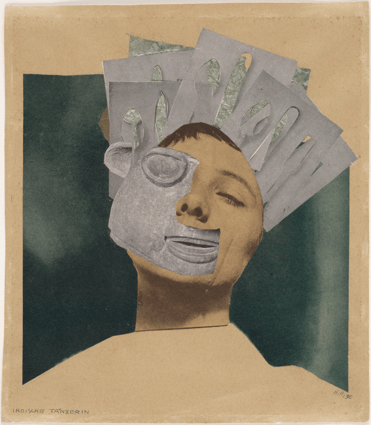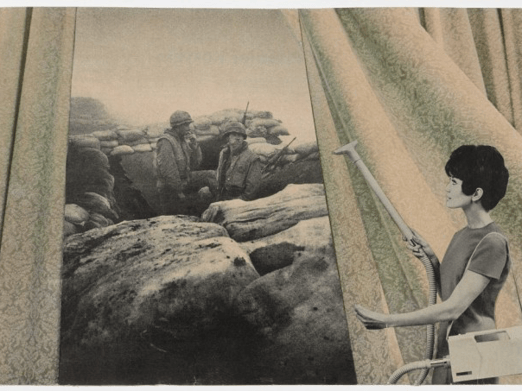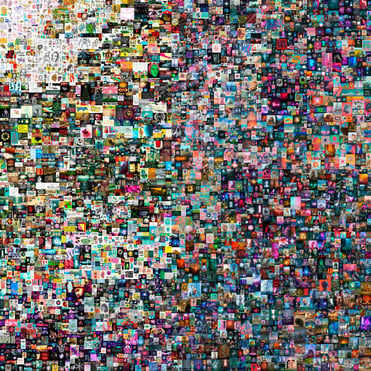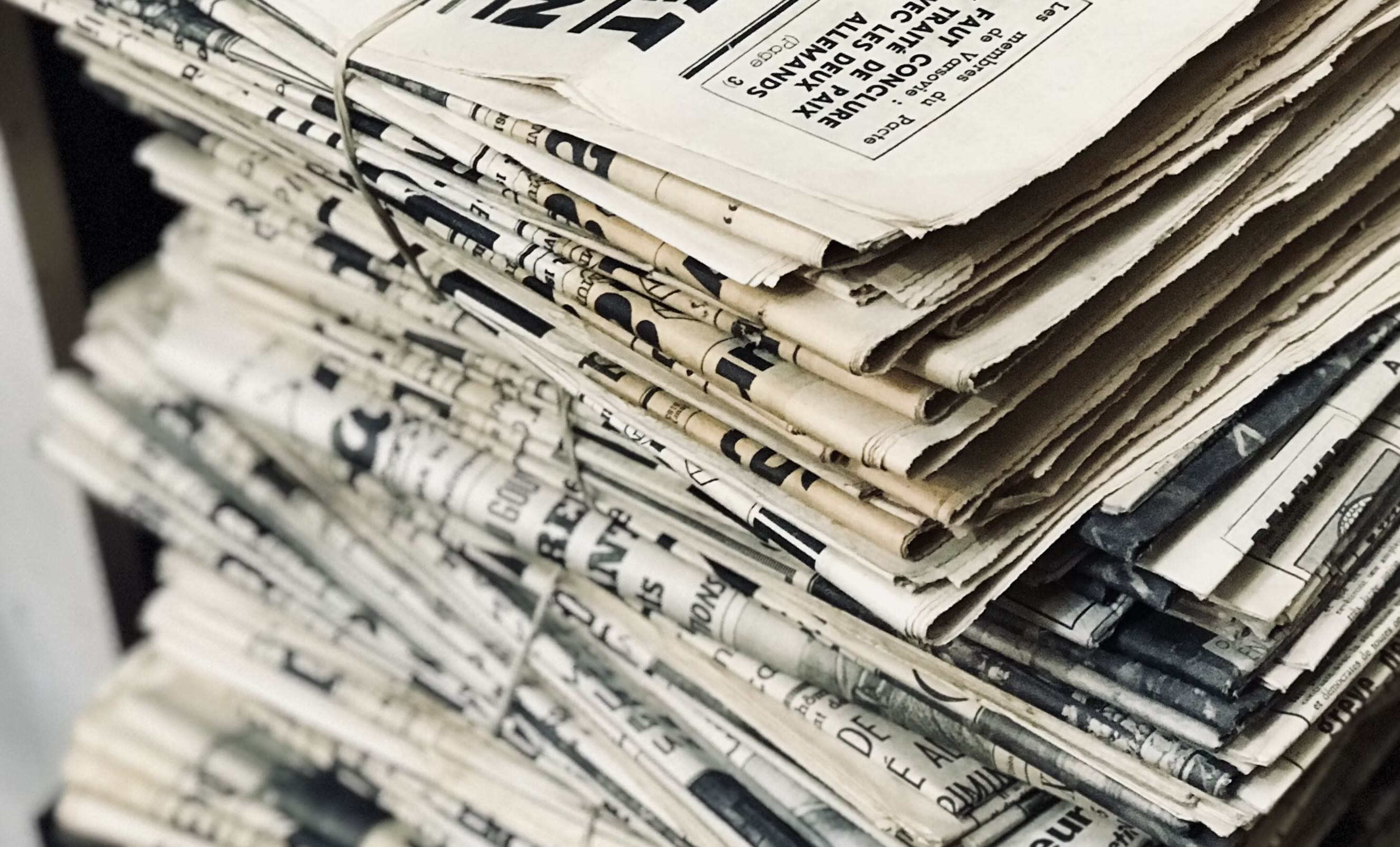What does collage even mean?
The word “collage” comes from the French “coller”, which means “to glue or stick together”. But collage entails much more than just gluing pieces together — it gives the patched painting a new twist. Fragments of meaning from external references collide with the plane surface, like a thoughtful rebrand of how painting and sculpture relate not only with each other, but with the world.
Piece by piece
The collage technique can be traced back hundreds of years: The invention of paper in China around 200BC, the use of glued paper by calligraphers in 10th Century Japan, gold leaf panels applied to cathedrals in 13th Century Europe, early Victorian photocollages in the 19th Century, and so on. But, the modern term “Papier collé” (glued paper) wasn’t coined until the beginning of the 20th Century by Pablo Picasso and Georges Braque. Many artistic authorities including the Tate and Guggenheim museums argue that collage as we know it didn’t emerge until then, when it became an art form of its own.
In September 1912, after an intensive collaboration with Pablo Picasso, Braque was inspired by wood-grain wallpaper spotted in Avignon, France, and began incorporating rectangular patches of the wallpaper into his charcoal drawings. Upon seeing Braque’s new creations, Picasso embraced the concept and produced nearly a hundred works soon after. His early collages, such as "Guitar and Sheet Music," featured layered paper, shading, and fragments from popular songs.
The tactile and visual interaction between paper and drawings brought a new direction and inspiration to other cubist artists such as Juan Gris — whose papiers collés have been described as some of the most complex of his time — and Futurist artists including Boccioni and Carrà. Word about Braque and Picasso’s collages spread to Russia, where visual artists and writers were collaborating on new art experiments. Suprematist artist Malevich introduced what he called “phonic masses” to his work, incorporating words into his paintings.
Back in France, the DADA movement rose from the chaos caused by WWI, and shared stylistic elements with the Cubists. In the early 1920s, collage was no longer restricted to the plane surface of a painting and newspaper clippings: Kurt Schwitters started experimenting with wood and detritus he found on the street, trying to create artwork that embraced all art forms. John Heartfield and Raoul Hausmann named their form of collage “photomontage”, as they considered their work to be constructions they assembled as engineers rather than artists. German artist Hannah Höch, who made collages as a child, rediscovered the technique on a trip to the Baltics with Hausmann and from there, started creating pieces that questioned gender and politics, making some of the most iconic contributions to the style.
Fun fact: The movement’s name was chosen at random in a French-German dictionary. Dada is a childish word for “horse” in French.

Hannah Höch. Indian Dancer: From an Ethnographic Museum (Indische Tänzerin: Aus einem ethnographischen Museum). 1930
All of these experiments laid the foundation for Surrealists who delighted in the mix of visual art and the written word, applying the principle of collage to different art forms including ready-made. A large exhibition organized by Louis Aragon was held in 1930, featuring works by Arp, Braque, Dali, Duchamp, Ernst, Gris, Magritte, Man Ray, Miró, Picabia, and Picasso. In 1938, Peggy Guggenheim hosted the “Exhibition of Collages, Papiers-collés and Photomontages” in London, showcasing works by Picasso, Arp, Ernst, Schwitters, Taüber-Arp, Vail, and more.
As many other avant-garde artists, Peggy Guggenheim and her husband Laurence Vail fled the war and emigrated to New York, which became the home for some of the most audacious Surrealists. After the war, Los Angeles became a melting pot of cultures, and artists such as Bertold Brecht and Man Ray moved over, bringing a touch of European avant-garde with them. Concurrently in San Francisco, Beat culture emerged: This was all about finding and experiencing, noticing the magic of the unnoticed. It shared similarities with the concepts behind collage art, even though collage artists like Wally Hedrick and Jay DeFeo had never heard of Picasso and Schwitters, as California had had less exposure to European trends.
Pop Art, which first emerged in the UK in the 50s, also made ample use of collages, first with Eduardo Paolozzi and Richard Hamilton. In 1958 in the US, Martha Rosler started making photomontages, critiquing the military conflict in Vietnam.

Martha Rosler, Cleaning the Drapes (from the series House Beautiful: Bringing the War Home), 1967-72. Courtesy MoMA
Tearing, ripping, pasting, transforming, is a natural world for an artist to tend to. Each artistic generation has experimented with collage, in one way or another. The art form can be found in photography, architecture, music, film, even fashion design, proving that it is a language of its own, a way of thinking.
Contemporary artists are no exception to the urge to deconstruct and rebuild and tear and rip. Lino cut artist Jay Caskie uses scraps of misprints to create lino cut collages. Kenyan artist Wangechi Mutu uses collage to explore issues of gender, race, and personal identity, with fragments of ethnographic photography, 19th-century medical illustrations, and magazine pornography.
Blockchain bliss: Collage art finds its missing piece
Digital art first emerged in the 60s, and since then, has become a global phenomenon with the advent of powerful tools such as the adobe suite, and social media allowing artists to share their work globally.
The introduction of NFTs in the digital art market has revolutionized how artists can sell their work — as unique, one-of-a-kind pieces, while ensuring a secure and verifiable record of ownership — and has significantly increased the value of digital art, with some pieces fetching millions of dollars. Yes, I’m thinking of Beeple’s “Everydays — The First 5000 Days”, and guess what, it’s a collage!

A new generation of artists and collectors have brought their styles with them to the world of NFTs. Photography, pixel art, AI art, animation, illustration, generative art, all have a place, and so does collage…
Many artists of the Bitcoin ecosystem have inscribed collage artworks as Ordinal inscriptions, using Gamma.io. Explore our Prints page and the Collage tag for more!


-1.png)

.png)